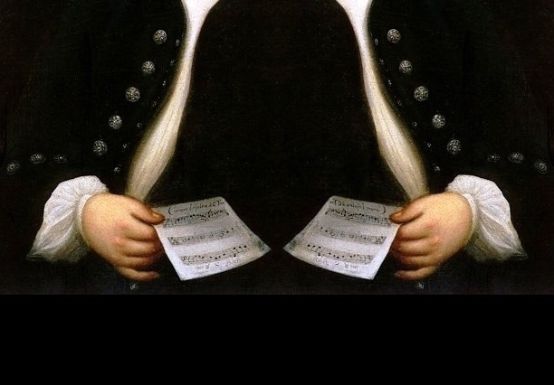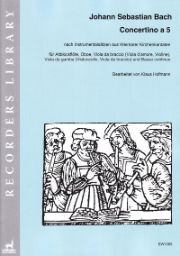A "new" concertino by Bach
Klaus Hofmann has created a convincing piece for treble recorder, oboe, viola da braccio, viola da gamba and b.c. from two instrumental cantata introductions.

Johann Sebastian Bach prefaced some of his cantatas with a sinfonia as an instrumental introduction instead of an opening chorus. These are always chamber music gems with often unusual instrumentation.
The present Concertino a 5 now combines the symphonies of the cantatas BWV 18 and 152 (As the rain and snow fall from the sky and Step onto the path of faith) into a three-movement instrumental work. In order to make the combination of the pieces possible, the instrumentation had to be coordinated. That of the cantata introduction to BWV 152 with alto recorder, oboe, viola (originally viola d'amore), viola da gamba and basso continuo was adopted unchanged. The original instrumentation of the Sinfonia of BWV 18 was quite unusual with four violas and continuo; in the revival it was even reinforced by two partially colla parte octave recorders. Major changes have now been made to this piece: the two original upper viola parts have been transferred to the recorder and oboe with partly altered octave positions or exchanged parts, and the viola da gamba and viola da gamba have been included in the motif. Minor technical retouching on both string instruments completes the preparation for this new and attractive instrumentation.
The rearranged Sinfonia now forms the first movement of this concertino, in which falling rain and snow are musically depicted in the character of a chaconne. The Adagio from BWV 152 in the middle movement, which is only four bars long and features finely chiseled upper voices, leads to one of the few instrumental fugues in Bach's cantata works.
The question arises as to whether it is legitimate to make such major interventions in a work. There are three reasons for this: Bach himself dealt with his compositions in a similarly free manner and changed instrumentation, just as a free approach to instrumentation was common at the time. Secondly, all the changes are plausibly explained and carefully documented. And thirdly, two independent symphonies are thus combined to form a new work that represents an absolute enrichment of the chamber music literature in terms of sound and composition.
Johann Sebastian Bach: Concertino a 5 after instrumental movements from Weimar church cantatas, for treble recorder, oboe, viola da braccio, viola da gamba and b.c., edited by Klaus Hofmann, EW 1085, € 21.80, Edition Walhall, Magdeburg








